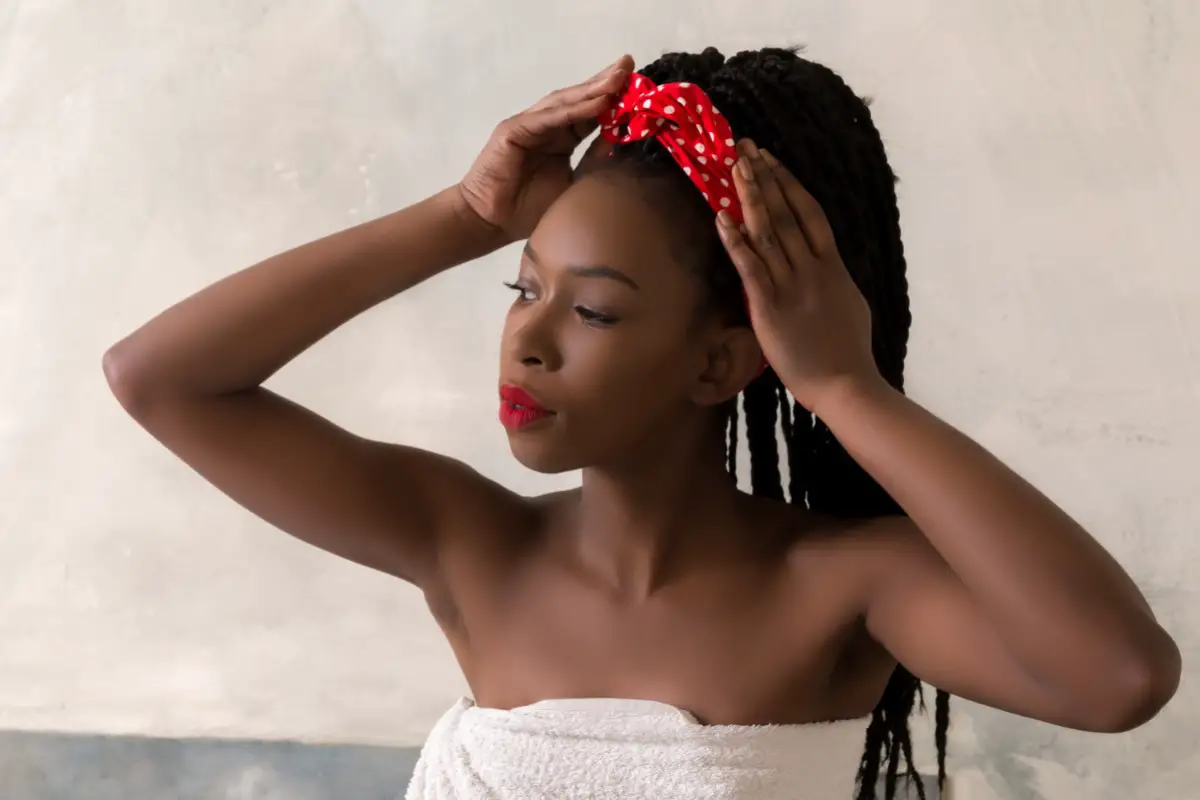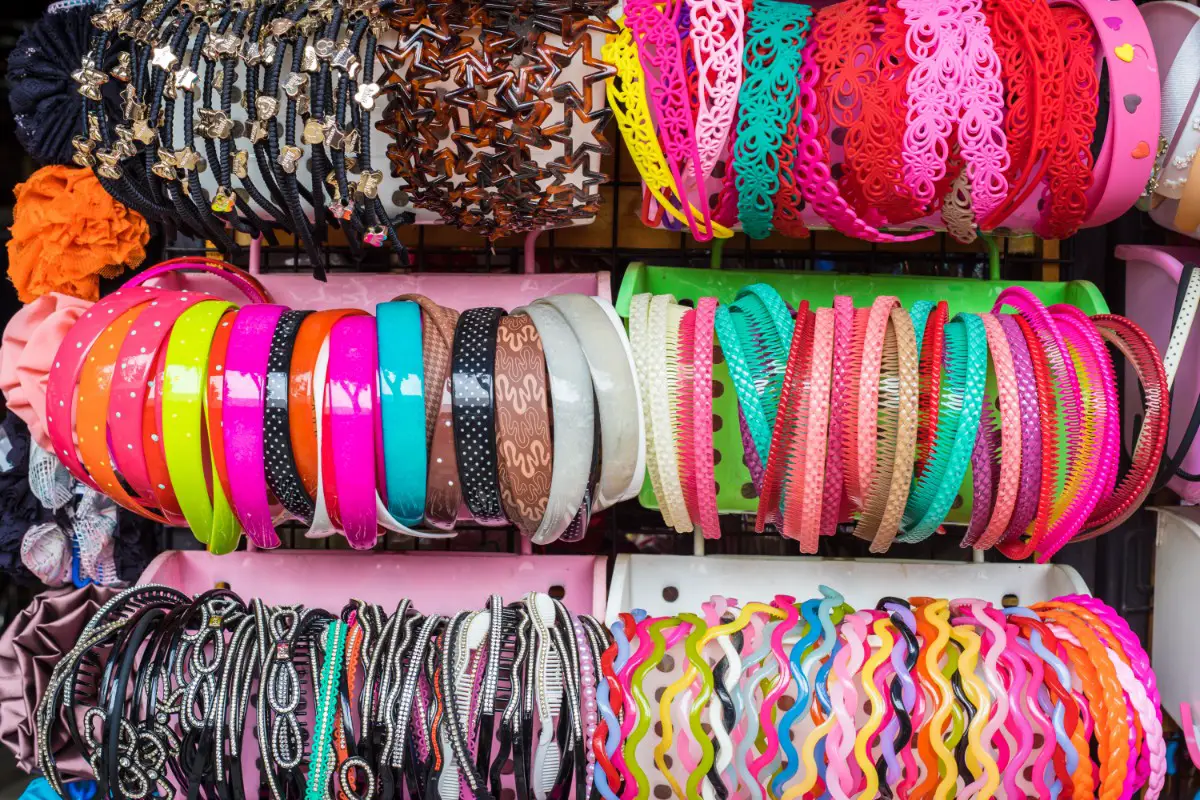Think headbands are cute but want to be sure that you are making an ethical decision before buying one? In particular, you may be wondering if headbands fall under the umbrella of cultural appropriation.
Here is everything that you need to know about contentious styles so that you can avoid any style issues in the future:
Is Wearing Headbands Considered Cultural Appropriation?
This does all depend on the hairband – most hairbands are culturally neutral and so, can be worn by anyone – however, turban headbands, wraps, and scarf headbands are typically associated with certain cultures and may be considered to be problematic by some.
What Type of Headbands May Be Fall Under Cultural Appropriation?
These days, there are more headband styles ever before. However, what you may think is a cute new style may actually have been around for quite some time.

The only reason that you may not have seen it before is because it has only been recently introduced into mainstream fashion.
As there are more and more headband styles being released every day, it can be tricky to know precisely which ones fall under the category of cultural appropriation. That being said, there are a couple of styles that you should be aware of.
This includes headwraps, turban headbands, and scarf headbands.
Why Can the Headwrap Be Considered Cultural Appropriation?
This is a very wide headband – one that can cover most of your head and hair. The style comes from the sub Sahara region of African and so has deep cultural ties there.
There is also a more troubling history of headwraps in the US. Enslaved people often wore them to keep the hair out of their face while working in the fields or houses. Due to this, it is seen as quite insensitive for someone who isn’t of African descent to wear such wraps.
Now, it can be rather difficult to know when a headband falls under the category of headwrap. Some headbands are simply quite wide and these aren’t considered cultural appropriation.
However, if the headband covers most of the head and can be knotted at either the top of the head or behind the head.
You should also watch out for ones in very bright colors as these are quite traditional in Africa. Also steer clear of anything that may fall under the category of ‘tribal’ print.
Why Can Scarf Headbands Be a Form of Cultural Appropriation?
Once again, not all scarf headbands may be seen as cultural appropriation. Thin ones, those that mimic vintage driving scarfs, or those that resemble bandanas are all safe for you to wear.
Thicker ones that look like scarves that look like the ones that people in Arab countries and Africa wear, however, will be considered cultural appropriation.
This is because these headbands are considered to be integral elements of these cultures. They may be worn to important or celebratory events.
You should also be careful of scarf headbands that are similar to headscarves worn by people who follow the Muslim, Jewish, and Orthodox Christian faiths.
As these are more religious symbols rather than cultural ones, you may imagine that you can’t be accused of cultural appropriation.
You should bear in mind that these symbols should be respected, though. Not only are they elements of people’s faith, but in many cases are guardians of women’s modesty.
There is also the fact that many women have been bullied for wearing such head coverings and have been bullied for their faith as well.
Therefore, to wear such a thing as an accessory isn’t taking into account that many people have to fight for their right to don their scarf.
Are Turban Headbands Cultural Appropriation?
Then there are turban headbands. If this type of headband is thin and made of a material like velvet, then it should be fine for you to wear.

However, if the width of it is quite thick, it is made of cotton or similar material, and is of vibrant colors, then it may be considered cultural appropriation.
You should also keep in mind to never wear the headband low, over your forehead. This is how people in different African countries wear their turban.
Being Wary of Boho Headbands
You should always watch out for headbands that are referred to as boho. These may be made out of real or fake leather, contain feathers, stones, and other embellishment.
Although boho may seem like a fashion or lifestyle term, this industry borrows heavily from other cultures – Native American, South Asian, African, etc. without any respect for where the styles were taken from.
In a similar manner you should also stay away from any headbands that may have cultural or tribal prints on them.
How Do You Know If Your Headband is Culturally Appropriating?
If you live with in a diverse population, then take note of the various headbands that people from all over the world wear. If you notice that a certain demographic wears a particular style, it is better to skip it.
Of course, you can also reach out to people who are a part of these cultural groups and get their opinion on it. This will give you a clearer idea of whether or not it is a good idea for you to wear it, particularly out in public.
You should also do some research into the various headbands that you would like to buy and wear. Understanding where they came from can give you insight into whether or not they are suitable options for you.
Never blindly follow a style simply because you see it online everywhere or because it is in high end fashion magazines. Both magazines and fashion houses have been engaging in cultural appropriation for a long time so they are not the best sources.
Can Headbands Be a Form of Cultural Appropriation?
You are safe with most fashion headbands but there are certain styles like headwrap hairbands, turban hairbands, and scarf headbands that may be considered cultural appropriation if you choose the wrong design – you should also think twice about boho headbands.

